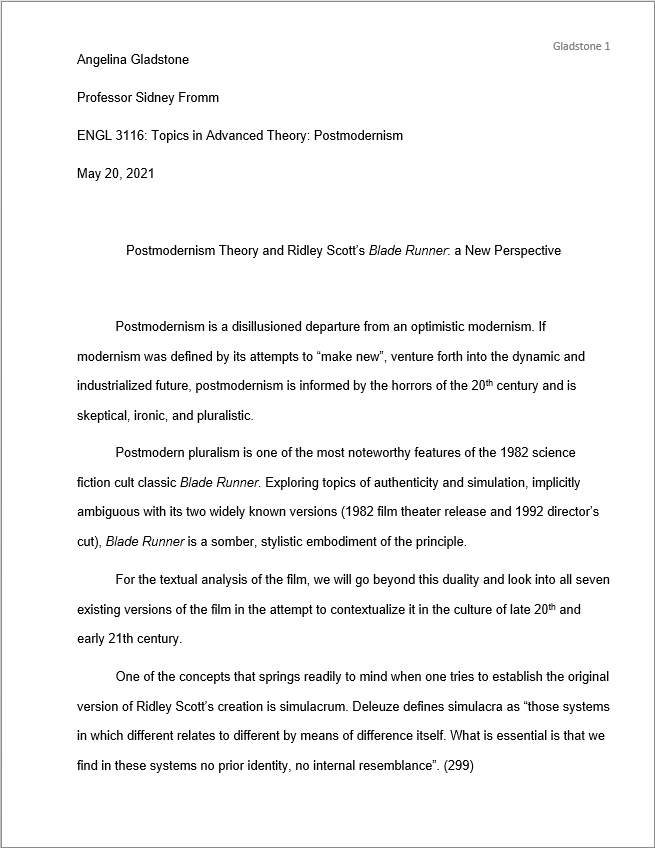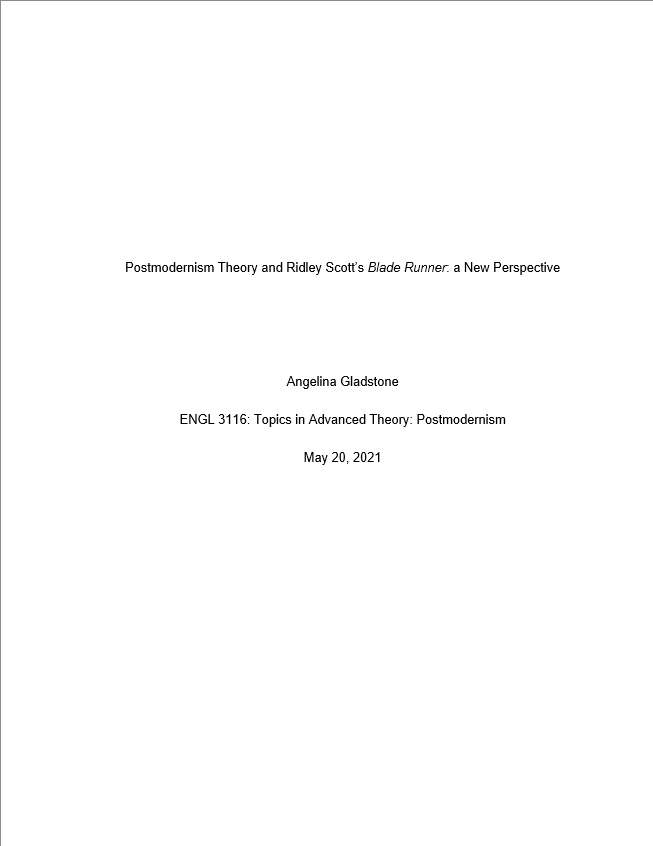As readers, we have vast experience with formatting, even before we start writing ourselves. We internalize formatting conventions as naturally as we acquire language from our parents, so we overlook formatting just as we don't think about grammar when we speak. However, it plays a crucial role in our interaction with the text and how we parse it.
Some general rules are intuitive to us. For example, a bigger font size usually means a heading of a higher order. A numbered list represents a hierarchy. Bold text marks something important, etc. However, there are also several distinct formatting systems. Even within academia, there are numerous style guides and paper help manuals. To make sense of them all and choose the right one for your college essay, read our guide to essay formatting.
What Is Essay Format?
An essay format is a way the essay is presented visually: how it appears on the page, how structural elements are placed in relation to each other, how the text is laid out spatially, etc. Even if your essay is well-written and logically organized, bad formatting that makes it appear messy will hinder the understanding. If your paper is poorly formatted, your instructor may take the points off your grade. Some may even refuse to grade the essay and return it to you for revision and cleaning-up.
The main principles of any formatting are:
- Readability (font, spacing, margins, etc. should all facilitate the reader's interaction with the text and make it easy to read, scan, navigate, and take in)
- Consistency (keep the same font, the same heading size, the same citation style, etc. throughout your text)
- Accordance with the content (formatting structure usually follows the content structure and serves as its physical embodiment. For example:
- the essay's topic is presented at the beginning in the form of a heading
- each piece of text exploring a smaller topic within the paper is formatted as a distinct paragraph
- pages are numbered to make sure the reader can navigate the text easily
- and so on
How to format a college essay? The answer to this seemingly simple question may depend on your field of study, your major, your university, or your professor. Formatting requirements can sometimes contradict each other, so it's helpful to know the exact order of precedence for them.
- First and foremost, you should follow the guidelines of your instructor for this particular essay assignment.
- If you aren't given any specific instructions, follow recommendations for the course offered at the start of the semester.
- If these are absent as well, contact your university's writing center. Each school has standard recommendations that are used by the institution across courses and majors.
- If, for some reason, these recommendations cannot be accessed or the instructions are incomplete, supplement them from the style guides appropriate for the subject area (for example, APA for essays on psychology, MLA for essays on literature, etc.)
- Finally, if you aren't sure which style guide applies to your topic, there is a standard way to format an essay.
Standard College Essay Format
Let's start with the best practices commonly recognized by the majority of colleges and universities. Even if your formatting deviates from the strict requirements of the assignment, these will ensure your essay is understandable, elegant, and neat, making a good impression on your reader.
Font
The rule of thumb is to choose a readable and clean font. Times New Roman and Arial are all-time favorites and widely accepted in academia across many style manuals. Other simple fonts, such as Calibri and Cambria, are sometimes accepted. However, better stick to the basics to be on the safe side.
Margins
One-inch margins on all sides are a rule of thumb. However, if you intend to print out your essay and turn in the hard copy, the 1.5-inch margin on the left leaves more place for comments and will be appreciated by your grader.
Spacing
Most universities require double spacing – 1.5 at the very least. This way document is easy to read, and there is plenty of space for comments and corrections between the lines if your instructor is grading on paper.
Paragraphs
There are two acceptable ways to break your text into paragraphs: 0.5-inch indent of the first line or line space between the sections. However, you should pick one (not both) and apply it consistently throughout the text.
Headings
In a short paper, such as an essay, you will probably need no more than three levels of heading. This is how you should format them:
Level 1 Heading (Centered, bold, 14pt.)
Level 2 Heading (aligned left, bold, 12pt.)
Level 3 Heading (aligned left, bold and italicized, 12pt.)
When and How to Apply APA Essay Format
APA is the most widely used format. The name "APA" comes from the Publication Manual of the American Psychological Association that was first published in 1952 and since then went through seven editions.
Many schools have accepted it as a default across the disciplines, even though its "natural environment" is behavioral and social sciences, such as anthropology, sociology, psychology, etc. If your subject area falls into one of those and you don't have any additional instructions, confidently use the APA format for essay writing.
APA Essay General Recommendations and Structure
One of the first things you notice about APA is the title page – a separate page for the essay title, your name, and school affiliation. Also, there is a running head – a right-aligned header at the top of every page with your paper's title in all caps (shortened to fit 50-character limit) and a page number. However, student papers (unlike professional academic papers) may not include the title as a page header – just the page number is enough for an APA format essay.
After the title page, there goes an abstract, your essay's body, and references. For relatively short student papers, an abstract is not mandatory.
Font
The latest APA edition allows any fonts as long as the one you choose is used consistently throughout the paper and is legible to all readers. Among the recommended for their accessibility and clarity are:
- Times New Roman 12 pt.
- Arial 11 pt.
- Calibri 11 pt.
- Georgia 11 pt.
- Computer Modern 10 pt.
- Lucida Sans Unicode 10 pt.
Margins
APA recommends standard 8.5" x11" paper with one-inch margins on all sides. For dissertations and theses, a 1.5-inch left margin is allowed if your school or instructor specifies it.
Spacing
As a rule, APA essays are double-spaced. Single or one-and-a-half spacing is allowed for footnotes, table cells, and figures. You choose which spacing is the most effective for the layout in those cases. Also, in exceptional circumstances (for example, equations), APA permits triple- and quadruple-spacing.
Paragraphs
Indent the first line of each paragraph 0.5 inch from the left using the tab key or setting the formatting in your word processor. Never use the space bar for indentation.
The text should be left-aligned, leaving the right margin uneven. No manual breaks (hyphens at the end of the line) are allowed. The exception is made for long URL or DOI hyperlinks.
Headings
The number of headings depends on the length of your paper. Here is how to format the first three levels of headings, which should be enough for a college essay.
Level 1 Heading (centered, bold, Title Case)
Level 2 Heading (left-aligned, bold, Title Case)
Level 3 Heading (left-aligned, bold and italicized, Title Case)
Citation
APA uses author-date parenthetical in-text citation. If you are citing an article or a book indirectly, you can give only the author's name and the year of publication, for example (Smith, 2020). If you take a quote directly from the text, you should also add the page/pages where the passage is situated, for example, (Smith, 2020, p.20) or (Smith, 2020, pp. 20-22). All sources cited in the text, either directly or indirectly, must be included in the references at the end of your essay.
APA Format Essay Example Title Page

When and How to Apply MLA Format Essay
MLA is among the most popular academic style guides as well as APA. The name comes from the Modern Language Association of America, whose MLA Style Manual and Guide to Scholarly Publishing was first published in 1985. MLA style is widely used in humanities, especially in English, literature, linguistics, cultural studies, and media studies. If you explore a topic in related areas, you can safely use MLA format for essay writing.
When asked to use MLA essay format, consult MLA Handbook, an abridged version of the style manual for students. This section is a short overview aiming to give you a general idea of how to write an essay in MLA format.
MLA Essay Structure and General Recommendations
If you weren't explicitly asked to, there is no need to include a separate title page. Instead, indicate your name, the name of your instructor, the course, and the date at the top of the first page, aligned left. Then, type the title of your page, centered, in Title Case. Then, double-space and write your essay. MLA recommends adding a page header with your name and page title separated by a space and right-aligned.
Font
MLA is very flexible on the matter of fonts. However, it requires that the font you choose should be legible, between 11 and 13 points in size, and provide enough contrast between regular and italicized text. The latter is needed to bring out the titles of the works you mention within the essay. Whichever font you choose, make sure to apply it consistently.
Margins
Type on a standard 8.5" x11" paper. Set the margins to 1 inch on top, bottom, left, and right. The running head should be positioned 0.5 inched from the top of the page. Your instructor may specify larger left margins to make notes and comments when grading your essay.
Spacing
Double-space your entire essay, including quotations and works cited.
Paragraphs
Use the Tab key to indent the first line of each paragraph 0.5 inch from the left margin. Use the same indentation for block quotes. Left-align your text and leave the right side of it ragged. Do not break the words at the end of the lines.
Headings
Headings are encouraged to organize your writing and improve readability. However, MLA warns against using headings to compensate for poor structure or beef up a short essay. Although no specifics are given, MLA advises using font styling and size to signify prominence. Also, you should including a line space above and below the heading. For consistency, just use the built-in styles of your Word processor.
Don't include numbers and letters to order headings unless the discipline you are working in conventionally uses them or your instructor recommends it.
Citations
MLA uses parenthetical name-page citation. That means you give the author's name and the page you are referencing in parentheses after quoting directly or paraphrasing. For example, (Fitzgerald 45). Note that you separate the name and the page number only with space. No comma or p. indicator is needed in MLA. Also, if you have already used the author's name while introducing the quote, you can only include the page number in parenthesis.
MLA Format Essay Example First Page

When and How to Apply Chicago Style Essay Format
The Chicago Manual of Style was first published in 1906 and since then went through 17 editions. It is one of the most respected style guides in the US, widely used in publishing and academia. Some disciplines that adopt CMOS as their default are history, journalism, anthropology, business, and fine arts. For students, there is Kate L. Turabian's Manual for Writers of Research Papers, Theses, and Dissertations. It is primarily based on Chicago but includes specific recommendations for class papers. Therefore, Chicago essay format and Turabian are just two names used interchangeably for student paper guidelines based on CMOS.
Chicago Essay Structure and General Recommendations
For class papers, the Turabian style allows both a separate title page or a title on the first page of the essay. In case of the title page, the title should be situated a third way down the page, centered, double-spaced, followed by your name, the course, and the date. Pages are numbered in the header, starting with the first page.
Font
Font can be chosen arbitrarily, however, it must be readable. CMOS gives Times New Roman and Courier as examples of such clear typefaces. The font size should preferably be 12 pt. or smaller, but no less than 10 pt.
Margins
Turabian is flexible on the size of the margins. However, 1" is a minimum required on all sides. Larger margins are allowed if required by your instructor.
Spacing
The main body of your essay should be double-spaced. The exception is made for block quotations, bibliography, table cells, and figures. There, you can apply the spacing that is the most fitting for readability.
Paragraphs
Indent the first line of each paragraph 0.5 inch with one stroke of a tab key or your word processor's built-in indentation tool.
Headings
You can choose any style for your headings, as long as you use it consistently. CMOS recommends using different font sizes, style (bold, italics), and positioning (left-aligned or centered) for distinguishing your headings. For example:
Level 1 Heading (Centered, Bold or Italic, Headline-style Capitalization)
Level 2 Heading (Centered, Regular Type, Headline-style Capitalization)
Level 3 Heading (Left-aligned, Bold or Italic, Headline-style Capitalization)
It also advised to use no more than three levels of headings and avoid periods at the end of subheadings.
Citation
Chicago recognizes two varieties of citations: notes and bibliography and author-date. The notes and bibliography system is common in humanities, while author-date is more prevalent in sciences and social sciences.
With notes and bibliography, the citation is marked by a raised number in-text. Each number corresponds to a footnote entry (at the end of the page) or an endnote entry (at the end of the paper). For example:
The author warns against interpreting the ghosts of Christina Rossetti's poetry as the representatives of the Holy Ghost.
- Stephanie L. Johnson, "CHRISTINA ROSSETTI'S GHOSTS, SOUL-SLEEP, AND VICTORIAN DEATH CULTURE," Victorian Literature and Culture 46, no. 2 (2018): pp. 381-402, https://doi.org/10.1017/s1060150318000062.
The author-date system gives a brief in-text citation in parenthesis by providing the author's name and year of publication. For example:
The author warns against interpreting the ghosts of Christina Rossetti's poetry as the representatives of the Holy Ghost. (Johnson, 2018)
In both systems, complete bibliographic information should be provided in a reference list, named "Bibliography" for notes and bibliography style or "References" for the author-date style.
Here is the essay format example title page for Turabian style:

If your assignment specifies any other formatting not covered here, don't worry! Our editors and writers are fluent in much more styles that it is feasible to cover in one short post. Follow our updates for other formatting types, check our previous posts for more details on citation guidelines, or just send your essay for formatting to us!










